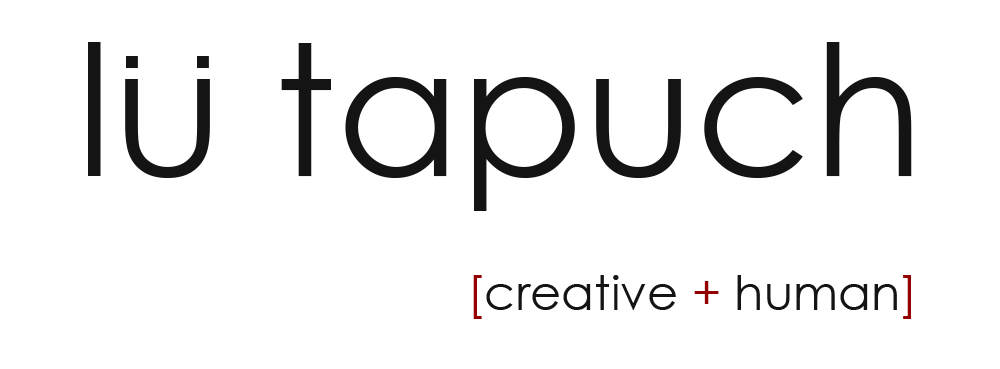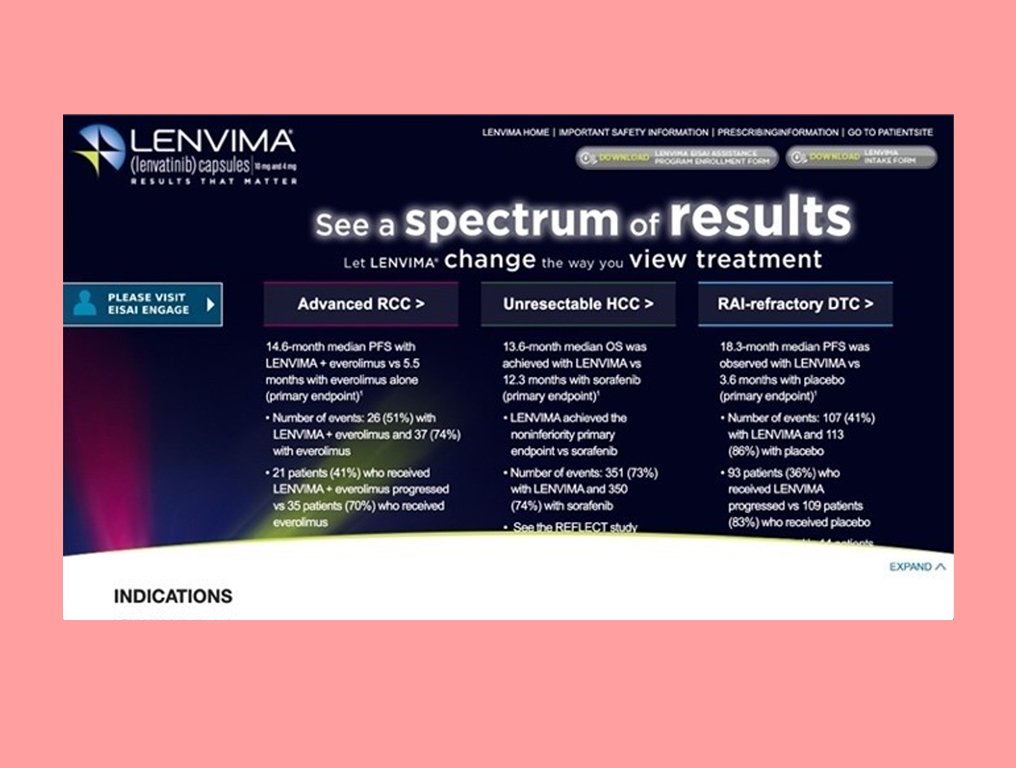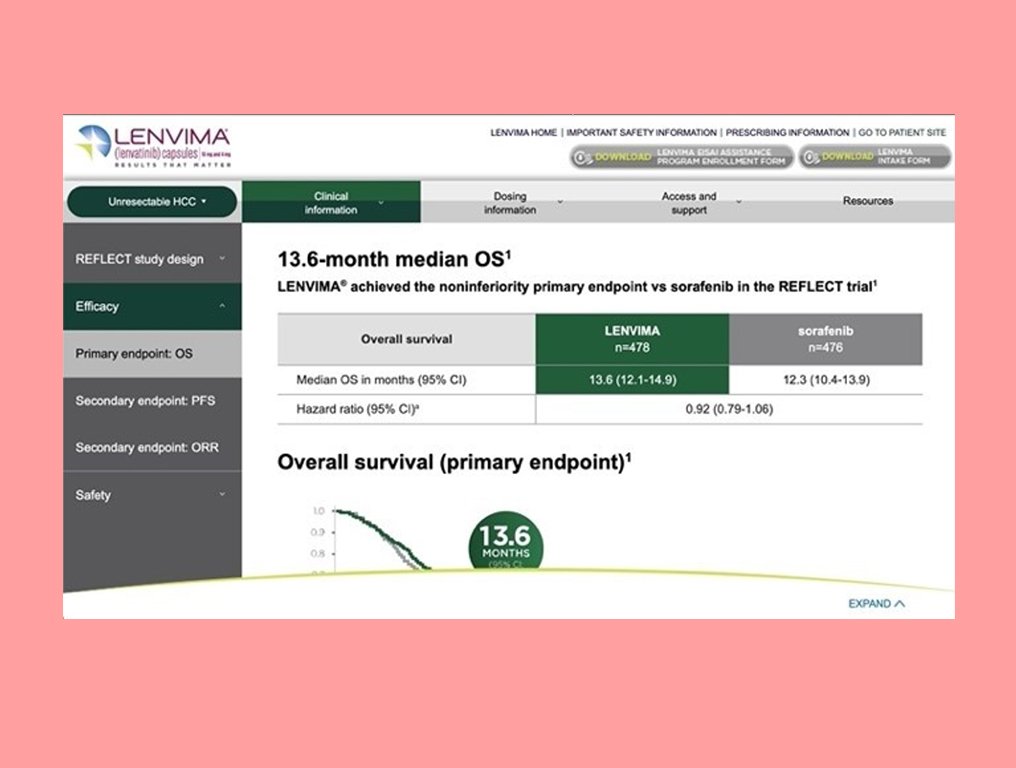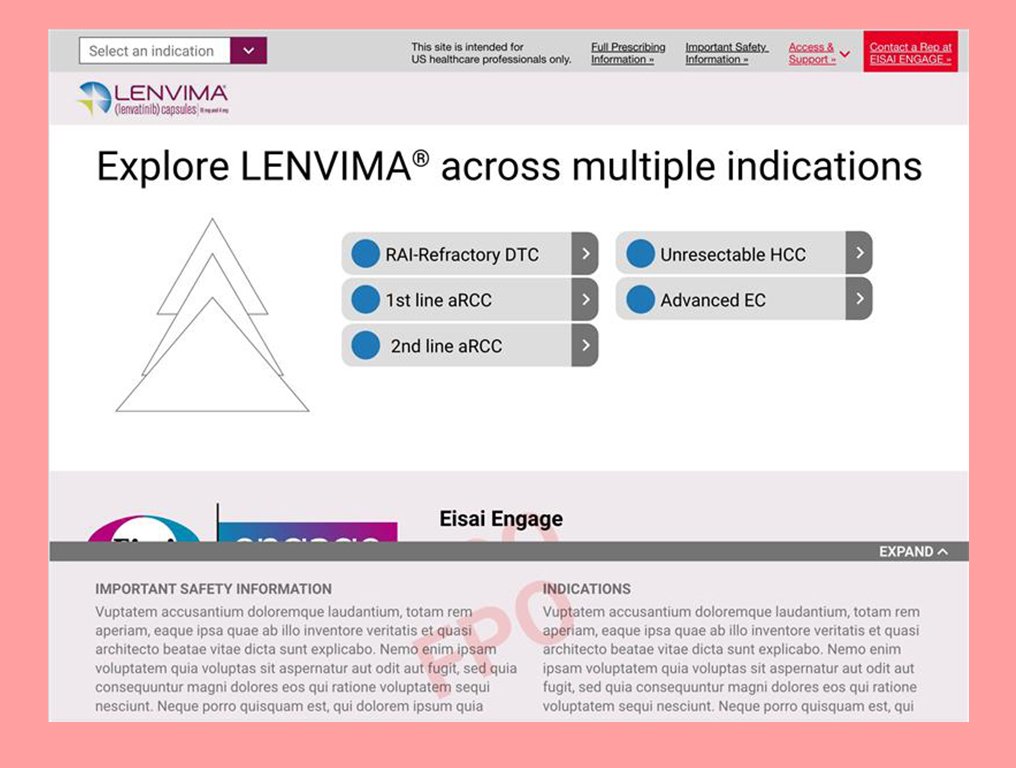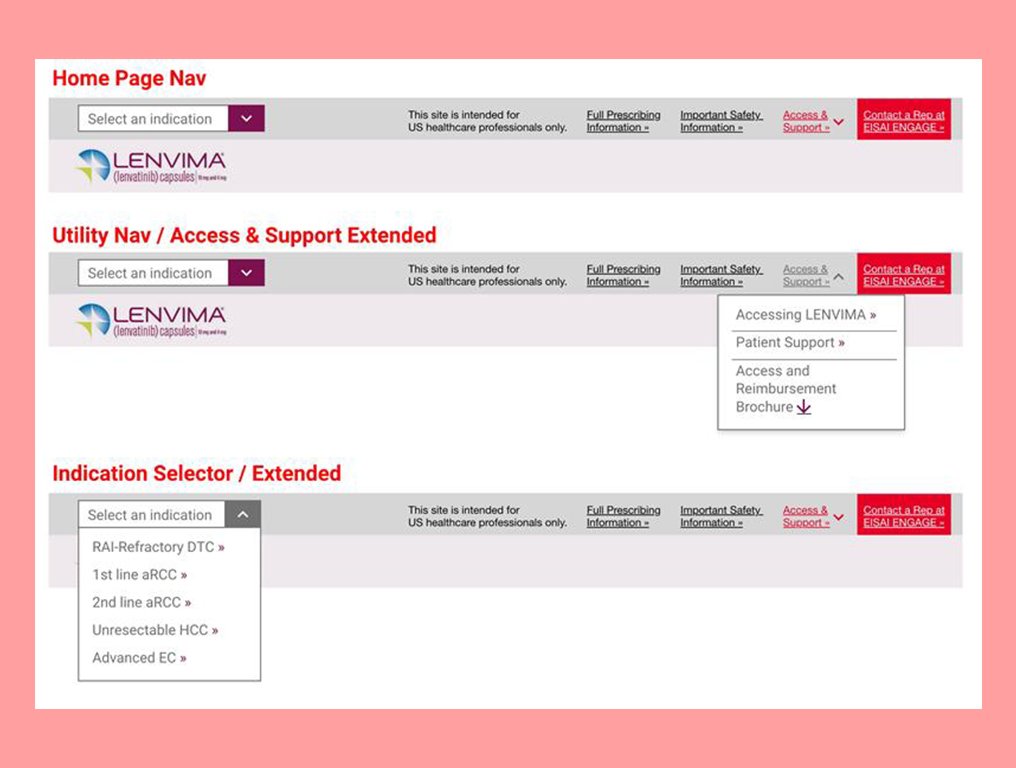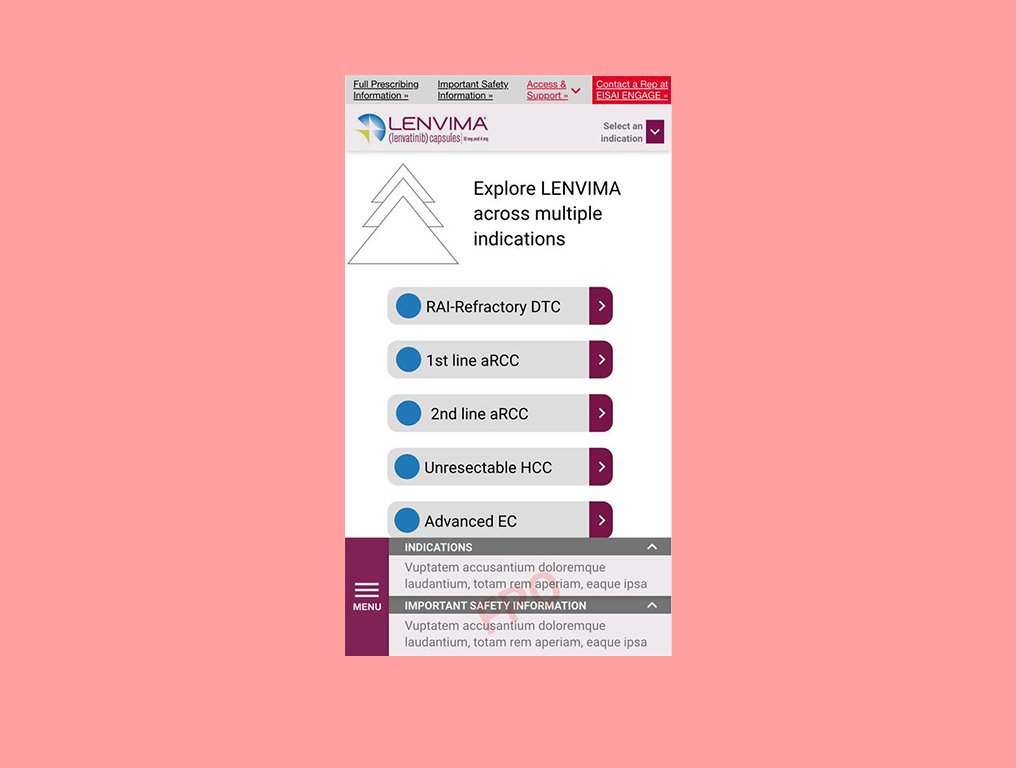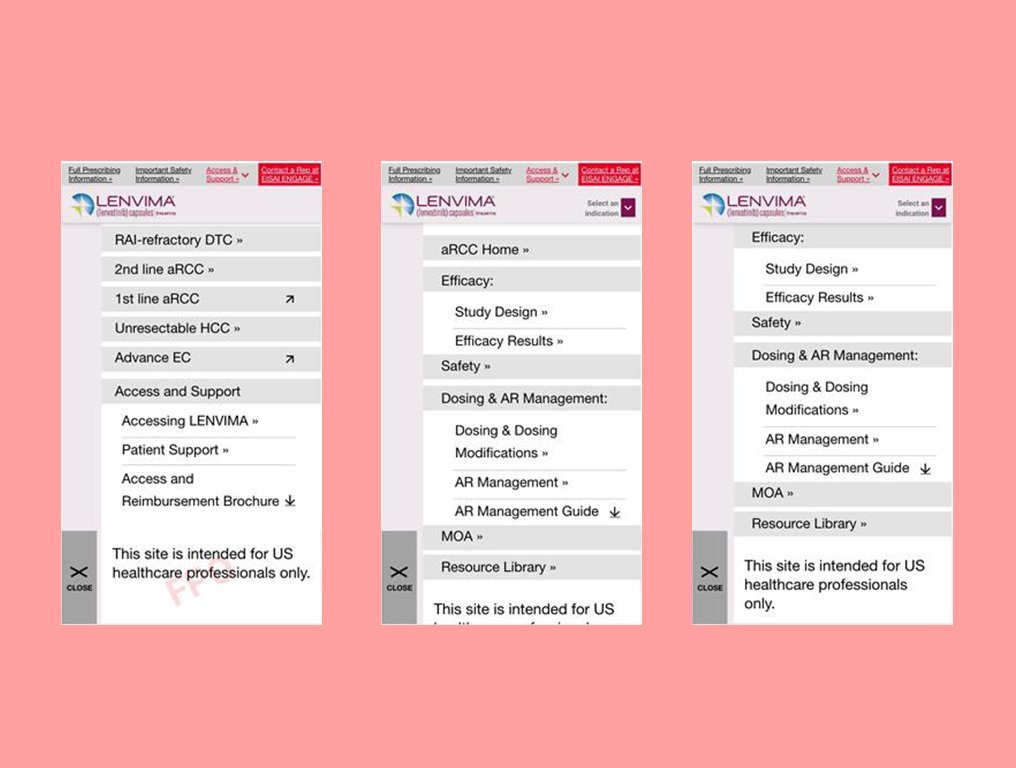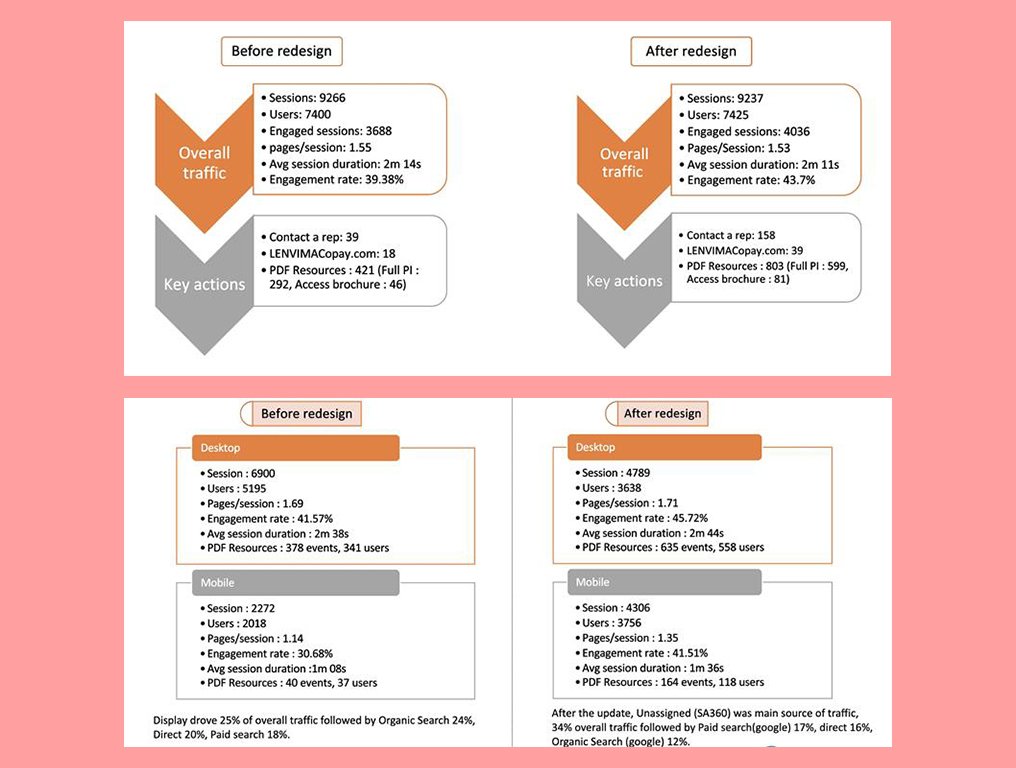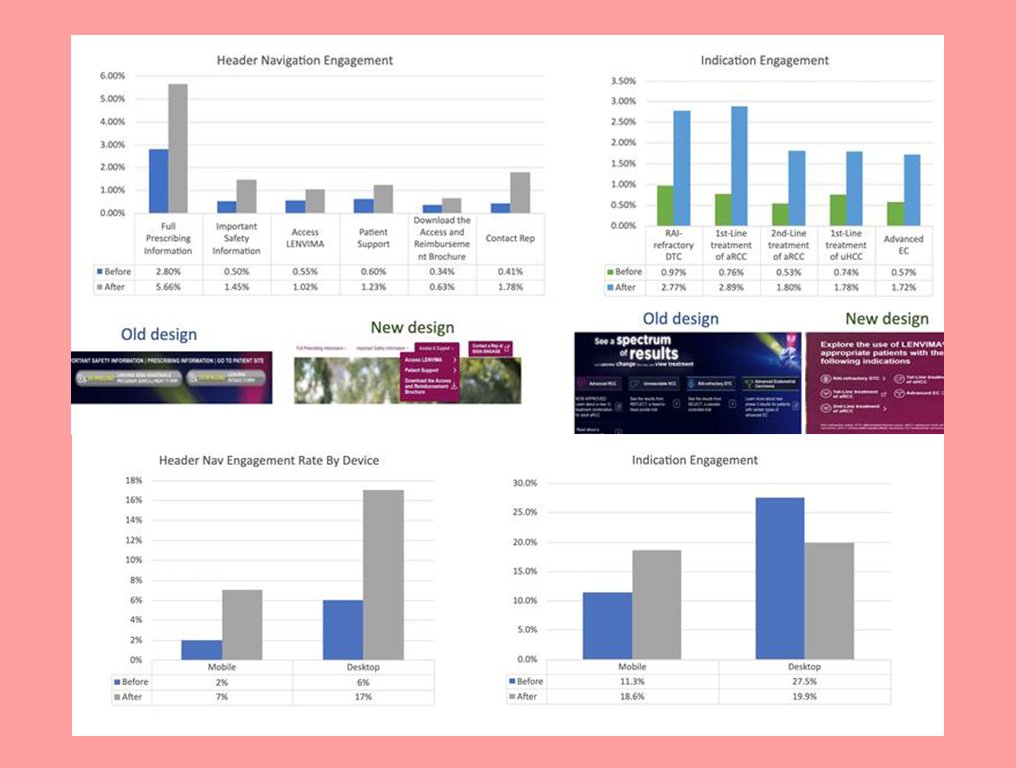HCP product
site redesign
THE PROBLEM
This HCP brand was surviving on a legacy site. It had several patches to make it work, but the time came to make a radical change. The client agreed to have user research conducted on their site, and the findings were quite enlightening.
RESEARCH & DISCOVERY
We conducted rigorous research with a sample group of physicians in partnership with our research department. The sample group reflected the criteria of the research sessions; some physicians did or did not prescribe the drug in the past. Some others were motivated to check information online. For the first and second line of treatment, these physicians would research data and combination treatments for cancers related to the liver and other organs online.
Some of the findings were:
Physicians were not particularly impressed or liked "the perfect patient" art imagery. If the art helped explain how the drug may help them with treatment, they discarded it as a waste of time and space.
Dark-looking websites were a turn-off to them. The reason is that the content did not speak to them in the dark.
They felt that the CTAs needed to be more precise and had questions related to the UX.
The physicians prefer other sites where the indications are upfront and easy to find. Helping their decision-making by having all current indications upfront would be necessary.
They were interested primarily in efficacy, side effects, and dosing management. An effective way to quickly navigate should be created.
Finding the services to access the medication was a secondary need but necessary as an objective for them. Making it easy to find or centralizing the information would allow their staff to find it.
The navigation of the site needed to be adequate for them. It needed to be more apparent and quickly identify where they were.
